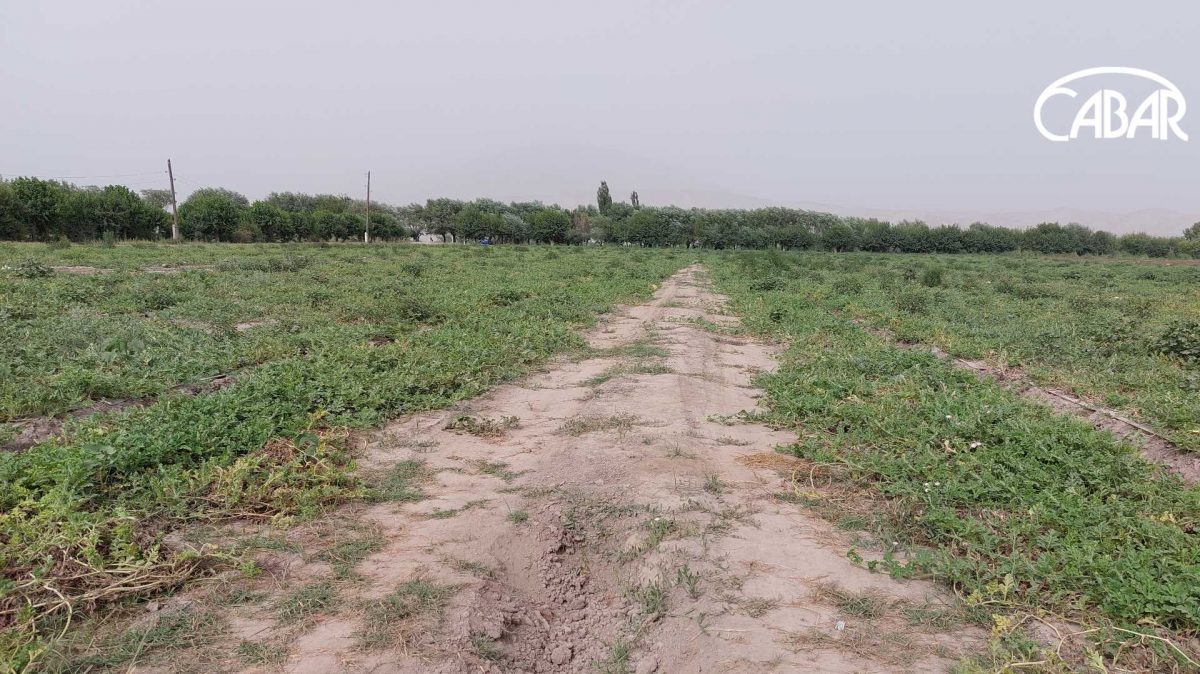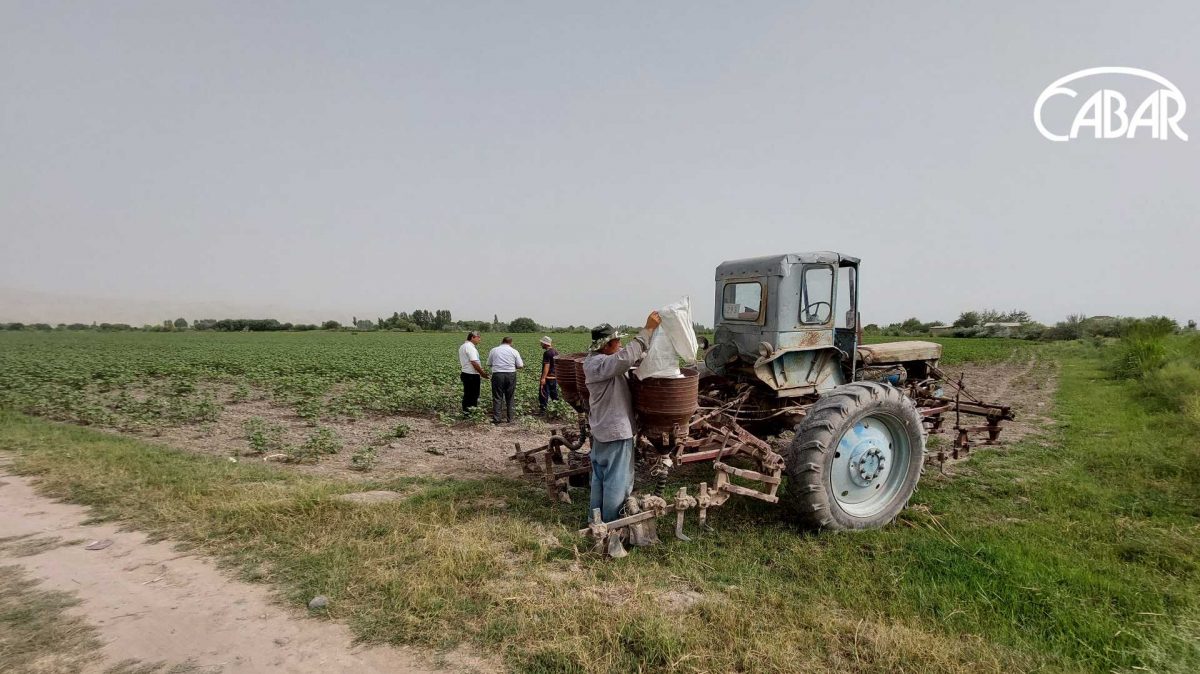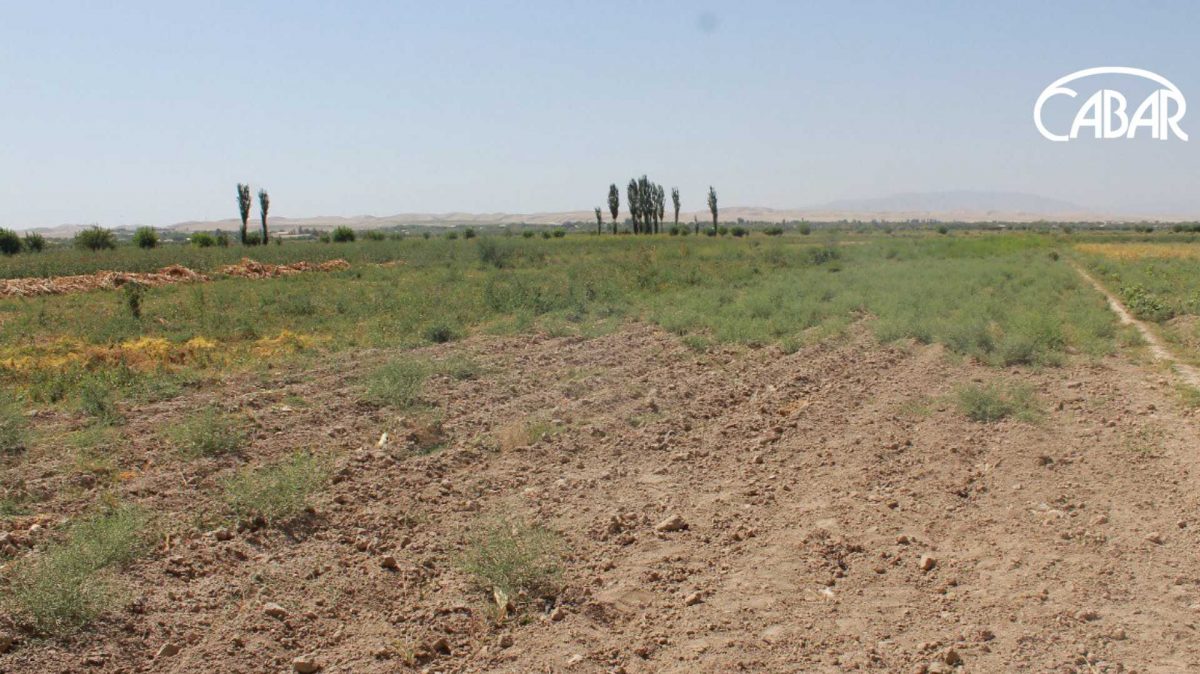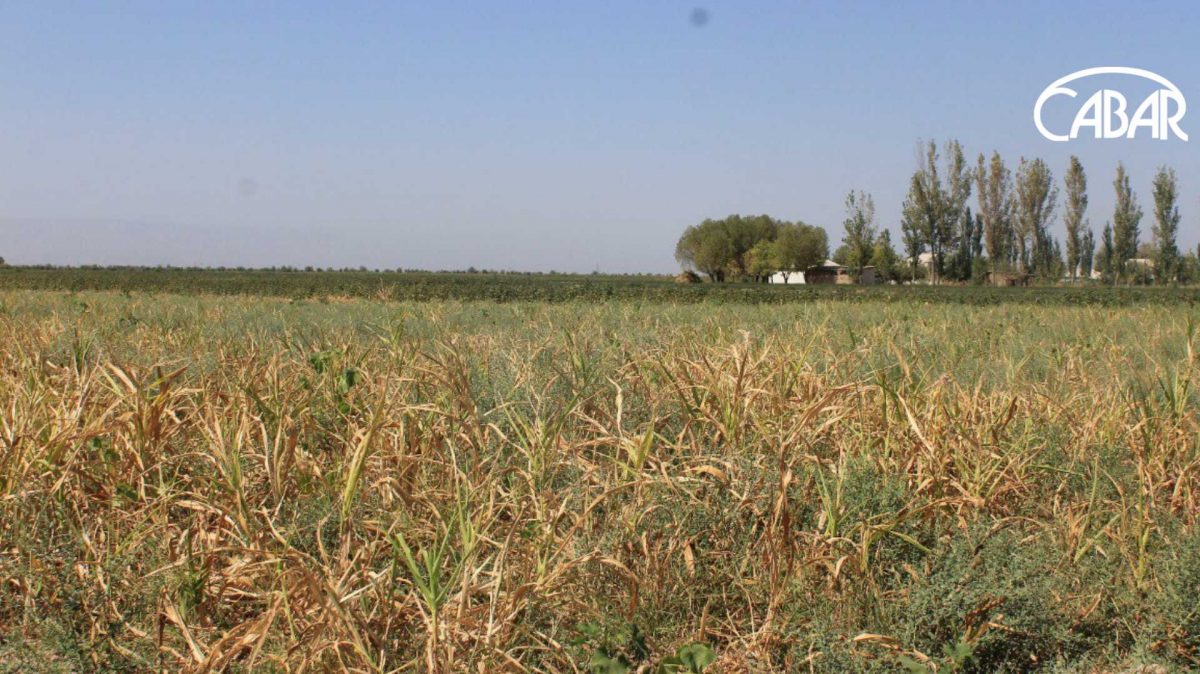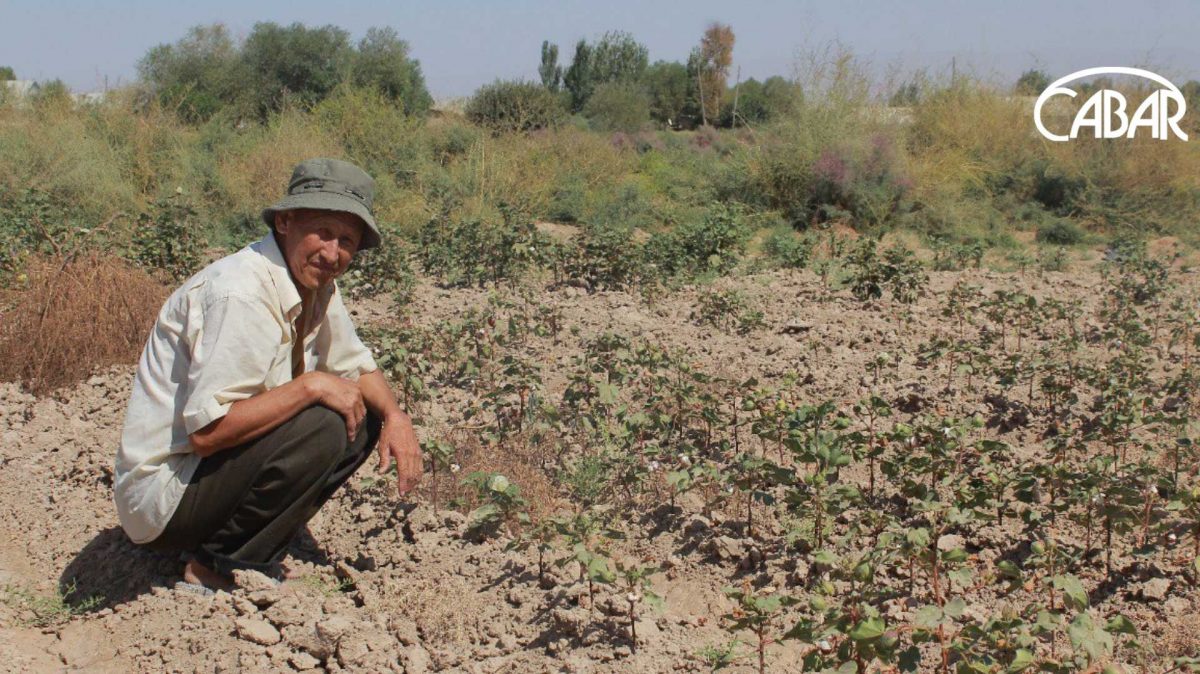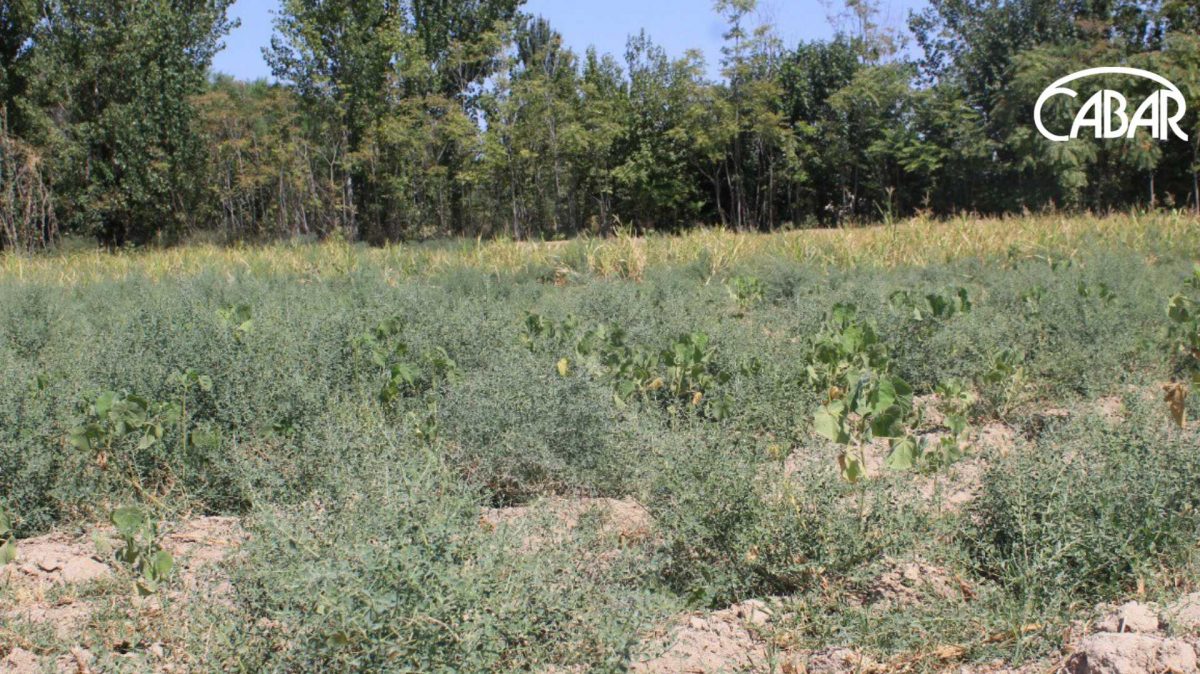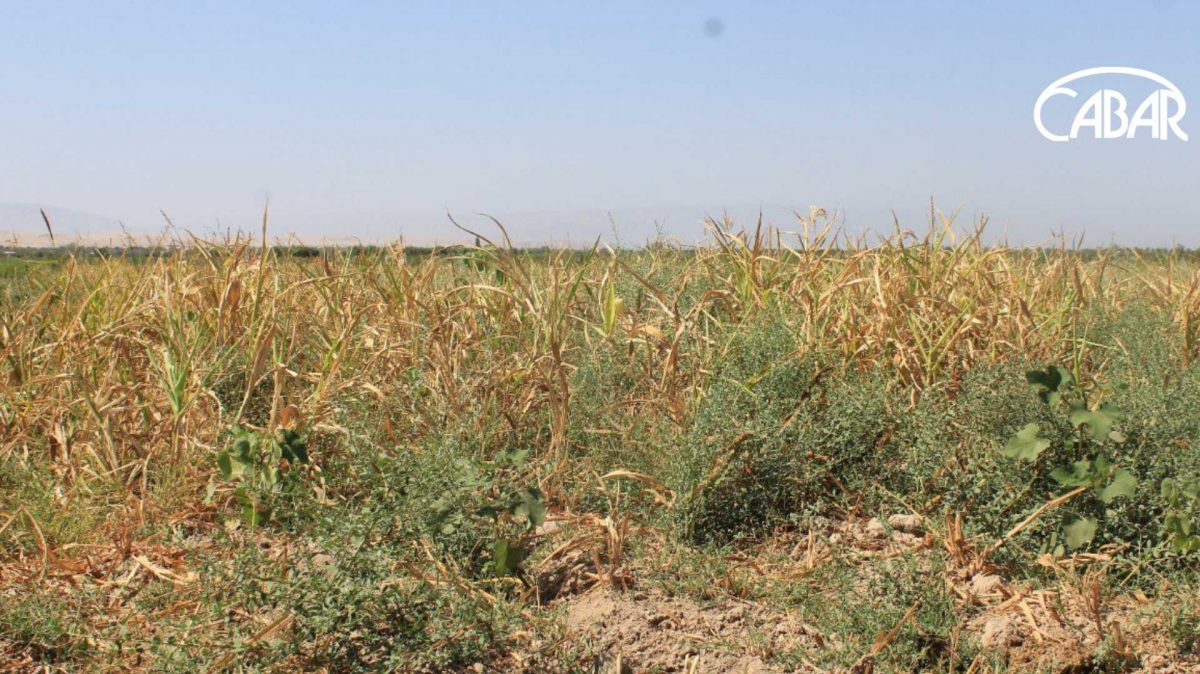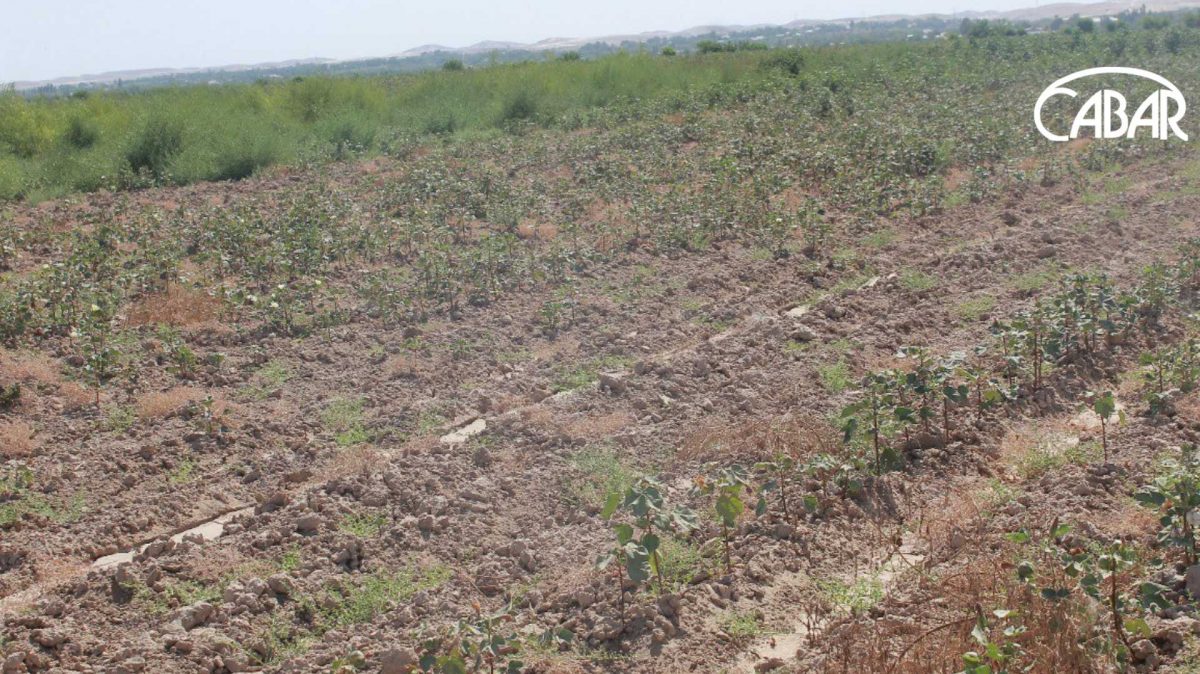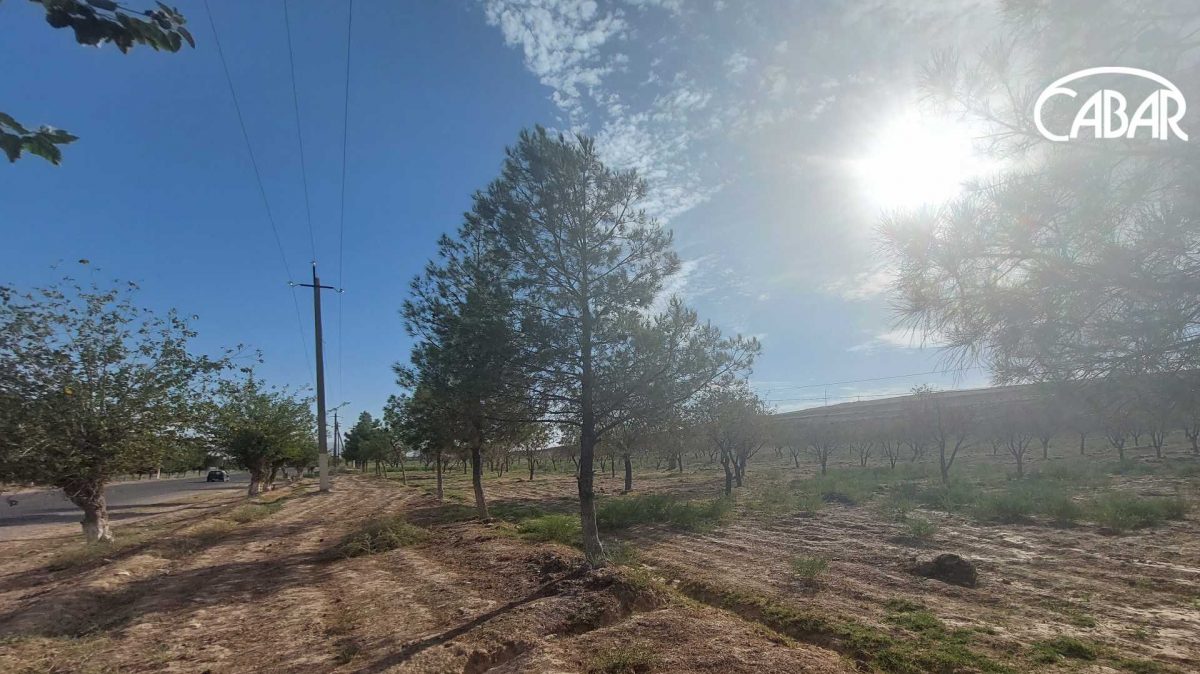Farmers in Khatlon province are concerned about this summer’s lack of irrigation water, which has caused thousands of hectares of irrigated land to dry out and lost crops.

The 73-year-old Hilvat Yusupov of Madaniyat village in Jaloliddin Balkhi District, southern Khatlon Province, Tajikistan, longingly gazes at his land every day. He has planted five hectares of cultivated land with cotton, but there is no hope of a harvest.
Lack of water is the main problem for farmers in these districts of Khatlon province. Yusuf Kholmatov complains that he has not been able to get water for irrigation since May.
Until the end of August, his lands were without water, although the cotton harvest had already started in the region in early September. This is why Kholmatov did not obtain his harvest. He also seeded corn, other vegetables, and cereals on his other lands, but those also dried up due to lack of water.
Farmers have repeatedly appealed to local authorities to solve this problem, but they have not received a clear answer.
“This year I only got a crop of wheat, later we planted cotton on this land. We only managed to water it twice. Now the soil is cracked and turned into dust because of the lack of water. We have been facing this problem for four years now. Most of my land has turned into a desert. We have no income, in spite of this, but the officials collect a land use tax from us”.

According to Hilvat Yusupov, in Soviet times all the land in their village was supplied with water, and peasants had a good harvest and provided themselves with food. Residents of Madaniyat Jamoat say that this season about 300 hectares of land was left without water and their crops were burnt out.
Ziyadullo Toshbekov is another farmer from the rural community of Madaniyat who owns one hectare of land. As in all previous years, the cotton he sowed this year also dried out due to lack of water. Every morning Toshbekov goes to his field and waits until evening for water to save at least some of his cotton.
“There is no water, the cotton I planted has dried up. Instead of profits, I suffer losses. The cotton has only been watered twice this year. The cotton does not grow and dries out. There is no point in appealing anywhere. Many times I explained my difficulties to tax inspectors. But they still demand taxes from us,” says Ziyadullo Toshbekov in anguish.
The Jaloliddin Balkhi District Water Management Department confirmed the problem to CABAR.asia and said that the main reason for the water shortage was the increase in the number of farms.
Mahmadamin Rajabov, head of Jaloliddin Balkhi District Water Management Department, said that this year they provided 96% of the district’s agricultural land with irrigation water.
According to Mahmadamin Rajabov, there are a total of 16 thousand 700 hectares of agricultural land in the Balkhi district of the Khatlon region, with an area of 9 thousand 800 hectares sown with cotton.
“The lands of some farms are irrigated by pumps, sometimes the pumps go out of order and there is a problem of water shortage. In fact, in the rural community of Madaniyat, only about 100 hectares of land have an irrigation problem. However, we have decided that we will supply water according to the quota,” says Mahmadamin Rajabov.

There are 3.5 thousand hectares of agricultural land in the rural jamaat of Madaniyat, 100 hectares of which lack irrigation water, said officials of the water department of this district.
Meanwhile, residents say that more than 400 hectares of land in just one village of this jamaat were left without water this year.
According to a report released by the Khatlon province’s Water Management Department in the first six months of this year, dozens of villages in the province are experiencing a shortage of drinking water. However, the agency does not provide statistics on irrigated farmland suffering from a shortage of irrigation water.
But when reporting on the problem of a shortage of drinking water, the local authorities of Khuroson, Jayhun, and Qubodiyon districts, mentioned that cultivated agricultural land, since the beginning of spring, has also been left without water. However, it was not reported specifically how many hectares of land were left without water.

Saidvali Qalandarov, a resident of the rural community of Ozodi in Jayhun District, said that over the past three years they have not been able to irrigate their cultivated land during the summer due to malfunctioning water pumps. Qalandarov said he suffered a loss of about 30,000 somonis (about $3,000) because the cotton he planted on one hectare of land dried out. Qalandarov is not the only farmer in the area suffering losses.
An official of the Jayhun district administration, on condition of anonymity, told CABAR.asia that there is a lot of farmland in the district. In summer, when the need for irrigation increases, the water becomes scarce, and the pumps installed during the Soviet era are out of order. And new ones are not being installed.
Such a problem has been observed in the Khatlon region for the past three years, but none of the statistical agencies in the Khatlon region records farmers’ damage caused by the lack of irrigation water.


